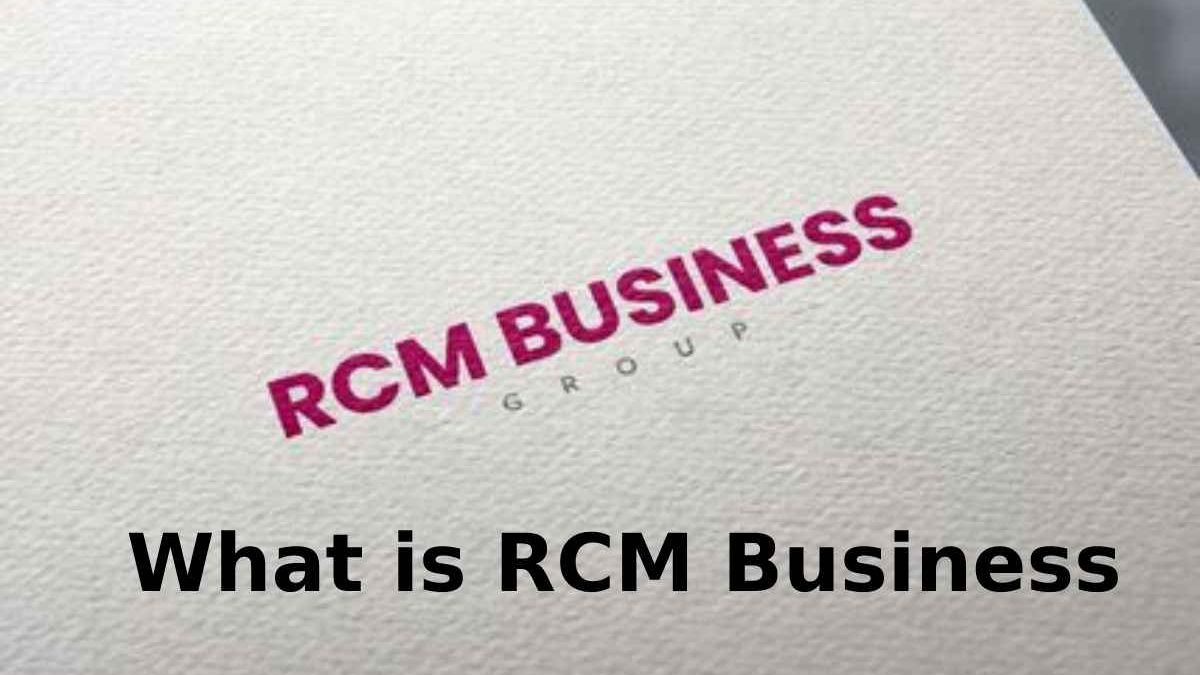Table of Contents
Introduction
Revenue Cycle Management (RCM) RCM Business is a financial process that medical billing software that uses healthcare services to track patient care episodes from registration and position scheduling to final payment of balances.
Revenue Cycle Management (RCM) is a financial process that medical billing software that uses healthcare facilities to track tolerant care episodes from registration and appointment scheduling to final payment of balances.
RCM integrates the healthcare business and medical aspects by combining administrative data such as patient name, insurance provider and other personal information that the patient is receiving and his health record.
Communication with health insurance companies is an integral part of RCM. When a patient makes an appointment, the doctor’s office or hospital staff will usually confirm the patient’s reported insurance coverage before the visit. After an insured patient receives treatment for a specific condition and after any co-payment, the healthcare provider or coder classifies the type of treatment according to ICD-10 codes. The hospital care facility then sends a summary of the care to the patient’s insurance company and the ICD and current procedure technology codes to see which part of the care is covered by insurance; the rest is billed to the patient.

Revenue cycle
According to the Healthcare Financial Management Association (HFMA), the revenue cycle includes all the administrative and RCM Business medical functions that help patients collect, manage and collect service income.
The Revenue cycle includes the following:
- Fee Recording: Providing medical services at a billable fee.
- Submission of Claims: Submission of claims for billable expenses to insurance companies.
- Coding: Accurate code diagnosis and procedure.
- Patient Collection: Determine the patient’s credit and collect payments.
- Pre-Registration: Collecting pre-registration information, such as B. Insurance coverage before a patient arrives for inpatient or outpatient procedures.
- Enrollment: Collecting patient information later during registration to establish a medical record number and meet various regulatory, financial, and medical requirements.
- Remittance Processing: Apply or reject payments through remittance processing.
- Third Party Tracking: Collection of Payments from Third Party Insurers.
- Use testing: Examining the need for medical services.
- Factors Affecting the Sales Cycle
- Like all financial matters, internal and external factors affect revenue collection.
- Entry cycle
The healthcare organization can have some control over internal dynamics such as B. Provider productivity, patient volume and service charges. However, it is more challenging to influence external factors such as patient payments or claims being assessed by insurance companies.
Revenue Cycle Management Systems
Most healthcare providers purchase and implement dedicated revenue cycle management systems for storing and managing patient billing records. An effective RCM system can reduce the time between service delivery and payment receipt while interacting with other healthcare IT systems – such as electronic medical records (EHR) and medical billing systems – while viewing the patient. Go through the maintenance process
An RCM system can also save the time of healthcare organizations by automating the tasks already performed by employees. These duties include administrative tasks such as notifying patients of upcoming appointments, reminding payers and patients of their current balance, and contact insurers with specific questions when a claim is overruled.
RCM systems can also save money by providing providers with insights into why a claim is denied. Specifically, an RCM system can reduce rejected claims by asking healthcare workers to enter all the information needed to process claims. This prevents them from revising or resubmitting the right and gives vendors a better idea of why some claims were banned, allowing them to resolve the issue. It also ensures that providers are taking proper care of medical patients.
An organization can purchase data analysis software and use dashboards to set and monitor revenue targets. The company can gauge the potential for improvement in its revenue cycle by sorting billing data and generating relevant reports.
RCM Business. Revenue cycle management systems now include technologies such as accurate medical codes assigned to the right patient to ensure knowledge processing and robotic process automation to speed up the process.
RCM and value-based care
Some experts believe that RCM systems will eventually help the industry move from a fee-based service to a price-based payment. Many of these analyzes in RCM systems allow payers and providers to take a more detailed look at their patient population, is suffering from which continuing diseases, as well as allowing them to screen the claims data and pinpoint any defects.
RCM sellers and key groups
Noticeable vendors that sell either stand-alone products or RCM systems united with EHR systems include:
McKesson – one of the main providers of medicines, medicine supplies and health IT products and facilities in the United States.
Cerner – a company that offers various health information technologies going from medical devices to EHR to hardware.
GE Healthcare – a minor of General Electric Co. That focuses on new progresses in health IT such as more radical medical imaging technology and patient checking systems.
ADP – a global business subcontracting services provider and one of the largest payroll outsourcing providers in the world.
Epic Systems – one of the largest earners of health IT. Used mostly by large U.S. hospitals and health systems to access, unify, store and share patient medical minutes.
Allscripts – changes and sells software and facilities to various types of health care workers.
athenahealth – a developer of cloud-based practice running and EHR systems for small to medium-sized doctor practices and hospitals.
Dell EMC – an American global technology company that offers products and services across all areas of computing, networking and loading.
Conclusion
With this option, there is no need to visit any office located anywhere. And since online business is so easy to set up, starting an online business has never been so cool.
This program also includes a singular bonus called ‘RCM Trade List Starter Kit’. It contains over $500 worth of food, including the most popular software tools used by thousands of people around the world.
All you need is a computer joined to the Internet. Most computers already come equipped with email programs and word processing capabilities.
The great thing about running a business online is that you can do it from anywhere! So you don’t need to fear about traveling long distances to join meetings and meetings, or more.
‣ I hope friends, through this article, I have given you information on how to build a successful RCM business plan, you must have got the information. So share your suggestions with us.

